New records of Cantharellus species from the northwestern Himalayas of India
- PMID: 24587961
- PMCID: PMC3933011
- DOI: 10.1080/21501203.2013.872205
New records of Cantharellus species from the northwestern Himalayas of India
Abstract
This study investigated several collections of the genus Cantharellus (Cantharellaceae) from the northwestern Himalayas, India, on the basis of morphology and molecular data. Phylogenetic relationships and species limits were investigated by using nuclear ribosomal large subunit sequences (LSU). We recognized 13 species: Cantharellus appalachiensis Petersen, C. cibarius Fries, C. lateritius (Berk) Singer, C. miniatescens Heinem, C. minor Peck, C. pseudoformosus and seven species, C. applanatus sp. nov., C. elongatipes sp. nov., C. fibrillosus sp. nov., C. himalayensis sp. nov., C. indicus sp. nov., C. natarajanii sp. nov., and C. umbonatus sp. nov., as new to science. All these species are described and their taxonomy and ecology are discussed. In addition, a key is provided to all the recognized species. The phylogenetic analysis recovered 10 major supported clades of Cantharellus species.
Keywords: Cantharellus; large subunit (LSU) of rDNA; molecular systematic; phylogeny; taxonomy.
Figures

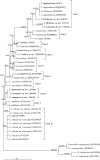
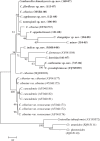
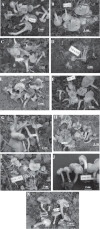
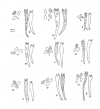
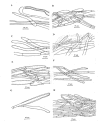
Similar articles
-
Cantharellus chicagoensis sp. nov. is supported by molecular and morphological analysis as a new yellow chanterelle in midwestern United States.Mycologia. 2016 Jul-Aug;108(4):765-72. doi: 10.3852/15-230. Epub 2016 May 6. Mycologia. 2016. PMID: 27153882
-
Afrocantharellus gen. stat. nov. is part of a rich diversity of African Cantharellaceae.IMA Fungus. 2012 Jun;3(1):25-38. doi: 10.5598/imafungus.2012.03.01.04. Epub 2012 Jun 21. IMA Fungus. 2012. PMID: 23155498 Free PMC article.
-
Cantharellaceae of Guyana II: new species of Craterellus, new South American distribution records for Cantharellus guyanensis and Craterellus excelsus, and a key to the Neotropical taxa.Mycologia. 2014 Mar-Apr;106(2):307-24. doi: 10.3852/106.2.307. Mycologia. 2014. PMID: 24782498
-
Analysis of nrDNA sequences and microsatellite allele frequencies reveals a cryptic chanterelle species Cantharellus cascadensis sp. nov. from the American Pacific Northwest.Mycol Res. 2003 Oct;107(Pt 10):1163-77. doi: 10.1017/s0953756203008475. Mycol Res. 2003. PMID: 14635765
-
Cantharellaceae of Guyana I: new species, combinations and distribution records of Craterellus and a synopsis of known taxa.Mycologia. 2012 Nov-Dec;104(6):1466-77. doi: 10.3852/11-412. Epub 2012 Jun 8. Mycologia. 2012. PMID: 22684285
Cited by
-
New Cantharellus species from South Korea.MycoKeys. 2020 Dec 22;76:31-47. doi: 10.3897/mycokeys.76.58179. eCollection 2020. MycoKeys. 2020. PMID: 33384572 Free PMC article.
-
Multigene Phylogeny and Morphology Reveal Unexpectedly High Number of New Species of Cantharellus Subgenus Parvocantharellus (Hydnaceae, Cantharellales) in China.J Fungi (Basel). 2021 Oct 28;7(11):919. doi: 10.3390/jof7110919. J Fungi (Basel). 2021. PMID: 34829207 Free PMC article.
-
Morphological and Phylogenetic Evidences Reveal Four New Species of Cantharellus Subgenus Cantharellus (Hydnaceae, Cantharellales) From China.Front Microbiol. 2022 Jun 27;13:900329. doi: 10.3389/fmicb.2022.900329. eCollection 2022. Front Microbiol. 2022. PMID: 35832819 Free PMC article.
References
-
- Abraham TK, Vrinda KB, Pradeep CK, Joseph AV. Edible Cantherelle from southern India. Mushroom Res. 1995;4:73–76.
-
- Akaike H. Likelihood of a model and information criteria. J Econom. 1981;16:3–14. doi: 10.1016/0304-4076(81)90071-3.
-
- Bhatt RP, Lakhanpal TN. New records of fleshy fungi for India. Ind J Mycol Plant Pathol. 1988;18:140–142.
-
- Bigelow HE. The cantharelloid fungi of New England and adjacent areas. Mycologia. 1978;70:707–755. doi: 10.2307/3759354.
-
- Buyck B, Hofstetter V. The contribution of tef-1 sequences to species delimitation in the Cantharellus cibarius complex in the southeastern USA. Fungal Divers. 2011;49:35–46. doi: 10.1007/s13225-011-0095-z.
LinkOut - more resources
Full Text Sources
Other Literature Sources
Molecular Biology Databases
